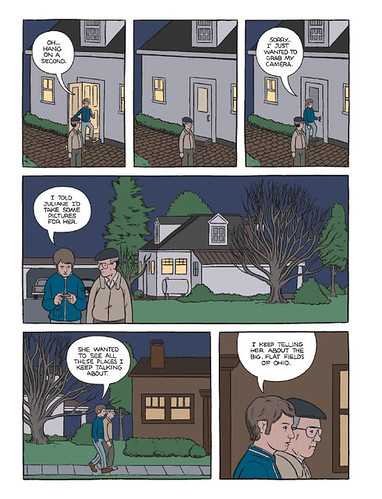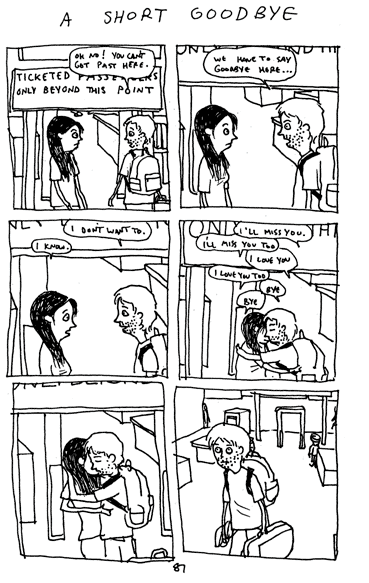
Comics comprise a small part of Lilli Carré’s section in New Chicago Comics. Video stills, hand-bound silkscreened books and an assortment of videos surrounded excerpts from the graphic novel The Lagoon (2008). Carré shows the viewer that comic art can be realized in many forms. Don’t Drink From the Sea (2010) and My Dreams Have Been Quite Strange Lately (2010) are short narratives that look like children’s picture books. The short videos were beautifully done, using movement and growth to connect time and space. Head Garden (2009) illustrates the travels of a head that leaves its body. I love the idea of the head as a seed, separating from its body to go on an adventure, and then eventually sprouting and returning to its owner.
Head Garden from Lilli Carré on Vimeo.
The featured portion of The Lagoon shows a clandestine encounter between a woman and a swamp creature in the dead of night, their connection arising from a haunting melody sung by the creature. The scene ends when the woman’s husband wakes up from a deep sleep and attempts to find her. The cliffhanger ending serves a purpose for both the writer and the curator. By entrapping the reader with an intense and mysterious scene, the curator shows that comics can be powerful narratives as well as art. The questions left unanswered by the excerpt encourage the readers to read the book.
Although I enjoy Carré's work, I did not enjoy the curation. There were too many art forms represented and it seemed almost eclectic. Comics may only be a small part of her repertoire, but it was inappropriate to display everything she’s ever created when the theme clearly was comic art. Perhaps the setup was meant to challenge our definition of comics. What is the difference between a graphic novel and a picture book? Isn't a video simply an animated version of a comic? If this were the case, the curator might be a genius...





